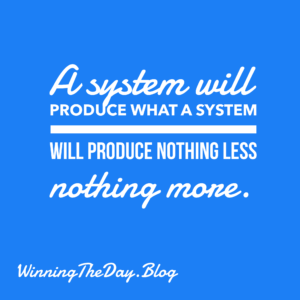Let’s cut to it: This market isn’t for the faint of heart. High rates, expanding inventory with higher days on market, demanding clients – it’s a grind. But for the sharpest brokers, recruiters, and agents, it’s also a massive opportunity to outpace the competition.
I’m borrowing and resharing the potent 3-2-1 structure and the inspiration for this content from James Clear, author of Atomic Habits and cofounder of Authors Equity. His June 26th newsletter and blog is a no-fluff way to deliver maximum impact in this market:
3 Ideas
I. Double Down on Your Hottest Lead.
“Start with the best opportunity available to you. If you make the most of what you have in front of you right now, better opportunities will become available as you go along.”
Forget chasing ghosts. Who’s that motivated seller you just spoke with? That agent candidate who’s actively looking to switch? The referral source who just promised you a warm intro? Stop scattering your energy. Nail that one thing first. Small wins build massive momentum, especially when the market feels stagnant.
II. Your Network is Your Net Worth. Period.
“Relationships are usually the most important thing. If you want to achieve more, there is some relationship that can unlock better results… Whatever you’re trying to accomplish, relationships are probably the key to getting there.”
In this market, transactions are harder-won. So, where’s your leverage? It’s your relationships. Are you consistently nurturing your top 50 past clients? Are you building genuine rapport with every lender, inspector, and title rep? For recruiters, are you actively connecting with team leaders and high-performers? Your next big deal or top recruit isn’t coming from a cold call; it’s coming from a cultivated connection.
III. The Toughest Days Are About Showing Up.
“Mental toughness is often framed as the perseverance that gets you across the finish line… But most days, mental toughness isn’t about crossing the finish line. It’s about getting to the starting line: Show up when no one is watching, Keep your eye on the ball, Do a little bit every day.”
Forget the Hollywood grit. Real mental toughness in real estate right now is the daily grind. It’s making those 20 prospecting calls when you feel zero motivation. It’s perfecting your listing presentation when listings are scarce. It’s following up with that lukewarm lead again. The market doesn’t reward the flashiest; it rewards the relentless. Don’t skip the “easy-to-skip” days.
2 Quotes
I. Stay Present: Stop Missing the Deal Right Here.
Jesuit priest Anthony de Mello nails it:
“Think of yourself in a concert hall listening to the strains of the sweetest music when you suddenly remember that you forgot to lock your car. You are anxious about the car, you cannot walk out of the hall and you cannot enjoy the music. There you have a perfect image of life as it is lived by most human beings.”
Source: The Way to Love
Are you so stressed about the next commission check or the looming market shift that you’re missing the opportunities, the client connections, and the joy of your actual work today? Be present in your current deal. Focus on the client in front of you, not the hypothetical next one.
II. Service First: That’s Where the Money & Meaning Are.
Poet Ellen Sturgis Hooper reveals a profound truth:
“I slept, and dreamed that life was joy; I woke, and found that life was service. I acted and behold, service was joy.”
Source: The Dial (July 1840)
This isn’t about being a martyr. It’s about strategic thinking. In a tough market, the agents, brokers, and recruiters who win are those who are problem-solvers. Who are you serving better than anyone else? How are you adding massive value? When you focus on helping others succeed – whether it’s a client buying their dream home or an agent building their business – the “joy” (and the income) follows.
1 Question
There’s a difference between feeling tired and feeling empty. One probably needs sleep. The other… purpose.
Are you low on rest or low on meaning?
This is your gut check. Are you simply grinding too hard and need a true break? Or is there a deeper void – a lack of connection to why you’re putting in these hours? If it’s the latter, stop. Reconnect with your core purpose.
- Why did you get into real estate?
- Who are you fighting for?
That clarity is your fuel in the lean times.


